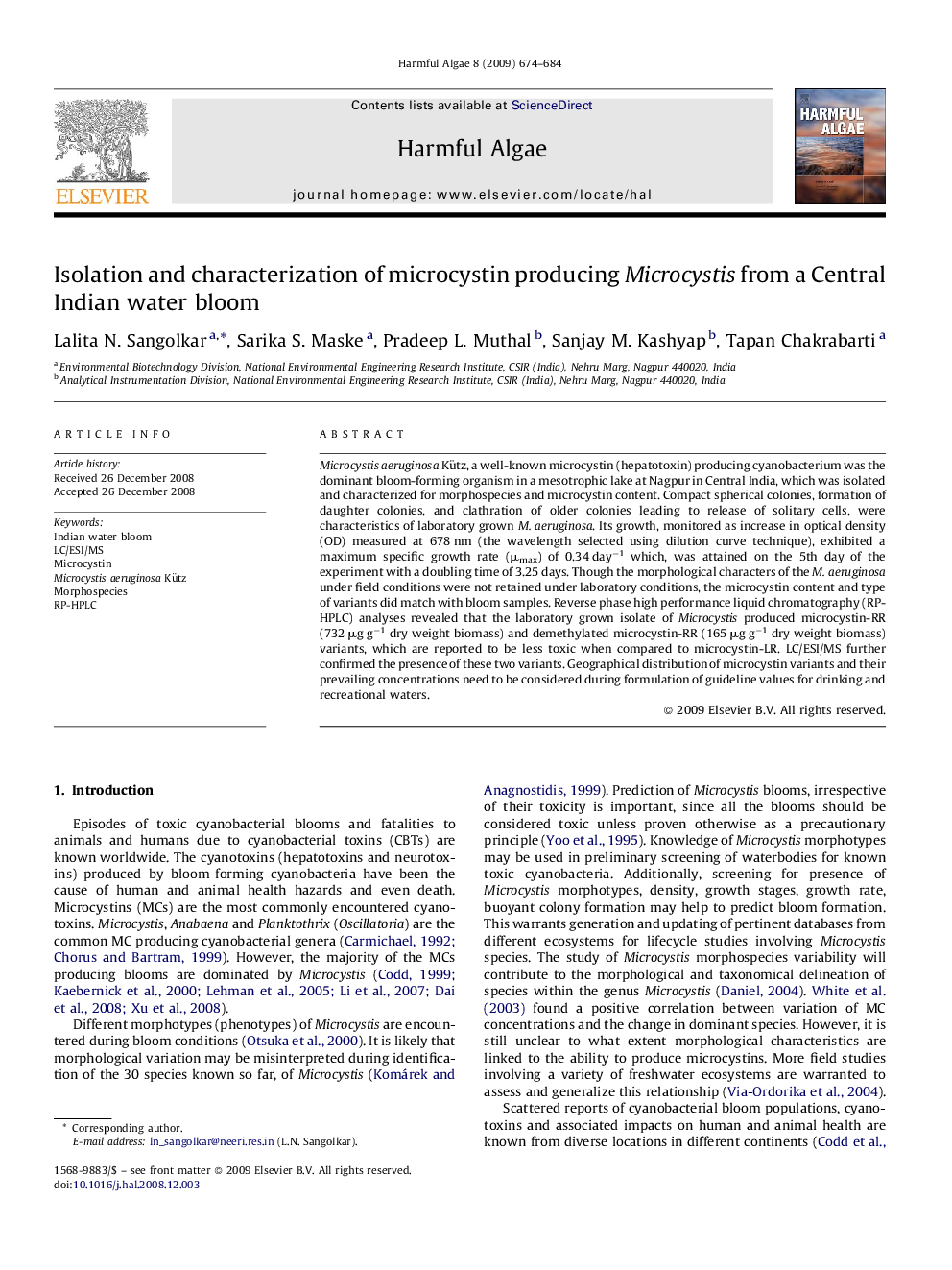| Article ID | Journal | Published Year | Pages | File Type |
|---|---|---|---|---|
| 4545942 | Harmful Algae | 2009 | 11 Pages |
Microcystis aeruginosa Kütz, a well-known microcystin (hepatotoxin) producing cyanobacterium was the dominant bloom-forming organism in a mesotrophic lake at Nagpur in Central India, which was isolated and characterized for morphospecies and microcystin content. Compact spherical colonies, formation of daughter colonies, and clathration of older colonies leading to release of solitary cells, were characteristics of laboratory grown M. aeruginosa. Its growth, monitored as increase in optical density (OD) measured at 678 nm (the wavelength selected using dilution curve technique), exhibited a maximum specific growth rate (μmax) of 0.34 day−1 which, was attained on the 5th day of the experiment with a doubling time of 3.25 days. Though the morphological characters of the M. aeruginosa under field conditions were not retained under laboratory conditions, the microcystin content and type of variants did match with bloom samples. Reverse phase high performance liquid chromatography (RP-HPLC) analyses revealed that the laboratory grown isolate of Microcystis produced microcystin-RR (732 μg g−1 dry weight biomass) and demethylated microcystin-RR (165 μg g−1 dry weight biomass) variants, which are reported to be less toxic when compared to microcystin-LR. LC/ESI/MS further confirmed the presence of these two variants. Geographical distribution of microcystin variants and their prevailing concentrations need to be considered during formulation of guideline values for drinking and recreational waters.
